Mold, bacteria, viruses, and other irritants lurking in your bathrooms could be the cause of your allergies and other health ailments. Here are nine ways your bathroom might be making you sick and how to combat these issues.
Cracked Tiles and Caulk

Deteriorating caulk and damaged tiles can pose serious health risks. Puckered, missing, or shrunken caulk allows water to seep into wall cavities, creating an ideal environment for mold growth, and missing grout can cause water damage behind tiles.
Mold reproduces by releasing spores that can trigger allergic reactions ranging from mild symptoms, such as itchy eyes and runny noses, to more severe issues, such as skin rashes and worsened asthma. Having mold and mildew anywhere is a health risk, but it’s especially dangerous in confined bathroom spaces where hot water and humidity open your lungs and make them extra vulnerable to inhaling spores.
To prevent these problems, regularly inspect your bathroom for signs of wear and tear. Replace failing caulk and repair cracked tiles promptly. When recaulking, remove all old caulk, clean the area thoroughly, and apply a high-quality, mold-resistant silicone caulk. For cracked tiles, we recommend hiring a professional to ensure proper repair and prevent future water damage.
Too Much Moisture
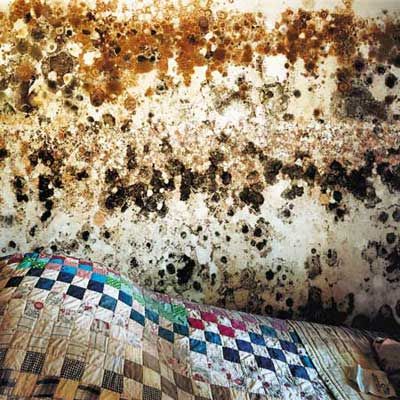
Excess moisture is a breeding ground for mildew and mold, and bathrooms provide an ideal habitat for their growth. Once established, mold isn’t easy to get rid of and can cause long-term respiratory issues.
Make it a habit to dry off surfaces that collect standing water after each use. This includes shower walls, bathtubs, floors, and sink areas. Then, prioritize good ventilation in your bathroom by running your ceiling vent fan during and after every shower or bath. The fan should run for at least 20 minutes to effectively vent moist air outside.
Additionally, consider using a dehumidifier in your bathroom to maintain optimal humidity levels between 30% and 50%. In nice weather, you may want to open a window to allow in fresh air from the outdoors.
The Wrong Fan
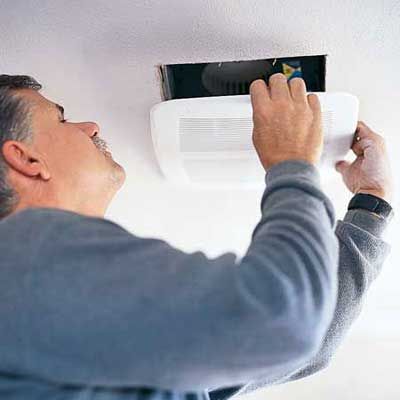
An ineffective bathroom fan can exacerbate moisture problems and contribute to poor indoor air quality. Many homeowners unknowingly have fans that simply recirculate indoor air or vent into the attic. This can lead to mold growth in hidden areas of your home, which can spread to other rooms.
To address this issue, replace your current fan with a true exhaust fan that directs particles and humidity outside of the house. When selecting a new fan, consider the size of your bathroom, the fan’s cubic feet per minute (CFM) rating, and its noise level. Vent the fan directly outdoors through the roof or an exterior wall and never into the attic or another indoor space.
Harsh Cleaners
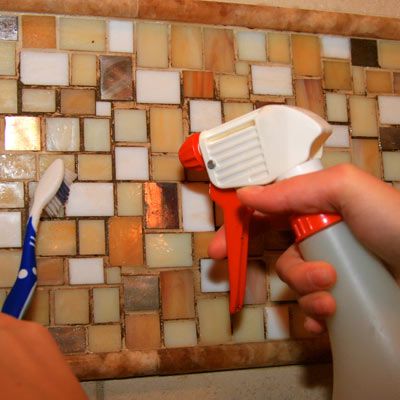
Many conventional cleaners contain ammonia and chlorine, which can irritate your skin and lungs and even trigger asthma attacks. These chemicals release volatile organic compounds (VOCs) that can linger in the air and cause respiratory issues.
Opt for safer, eco-friendly alternatives that are just as effective at cleaning and disinfecting. Look for products certified by third-party organizations, such as Green Seal or EcoLogo. You can also create your own cleaning solutions using natural ingredients, such as vinegar and baking soda.
Dirty Bathroom Faucets
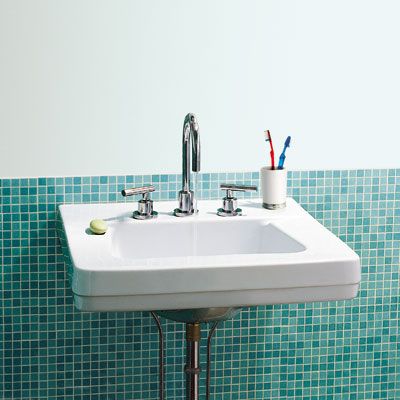
Bathroom faucets can quickly collect germs, viruses, and contaminants, such as fecal matter.
To effectively sanitize your faucets, use a 3% hydrogen peroxide solution or EPA-certified disinfecting wipes. Pay special attention to handles, spouts, and the areas around the base of the faucet. For an extra layer of protection, install touchless faucets that reduce contact. Remember to clean and disinfect other frequently touched bathroom items, such as doorknobs, light switches, and toilet flush handles.
Toxic Shower Curtains
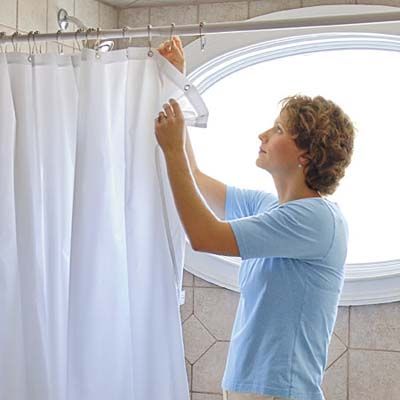
Many vinyl shower curtains contain phthalates, chemicals linked to reproductive health issues and other potential hazards. These compounds can off-gas into your bathroom, especially when exposed to heat and humidity during showers.
Opt for shower curtains made from safer materials, such as nylon, polyester, or organic cotton. These alternatives are safer, more durable, and easier to clean than vinyl shower curtains. When selecting a new shower curtain, look for products labeled as phthalate-free or PVC-free.
Chlorine Exposure
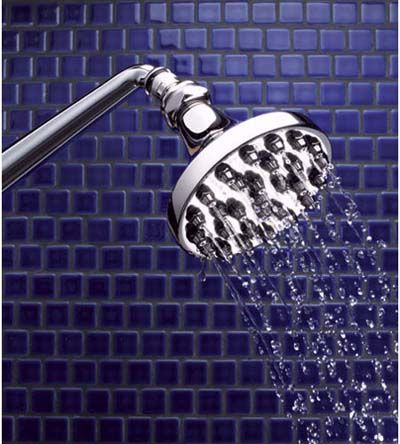
Chlorine, commonly found in tap water, can pose health risks when inhaled as vapor during hot showers. Exposure to chlorine vapors may increase the risk of respiratory issues, fatigue, and even certain types of cancer. Chlorine can also strip natural oils from your skin and hair, leading to dryness and irritation. To reduce your exposure to airborne chlorine while showering, consider installing a whole-house water filter or a filtered showerhead.
A whole-house water filtration system removes chlorine and other contaminants from all water sources in your home. If this option isn’t feasible, a high-quality filtered showerhead can effectively reduce chlorine levels in your shower water. Look for models that use activated carbon or KDF (Kinetic Degradation Fluxion) filtration media for the best results. Remember to replace filter cartridges as recommended by the manufacturer for best performance.
Old Paint and Plumbing Fixtures
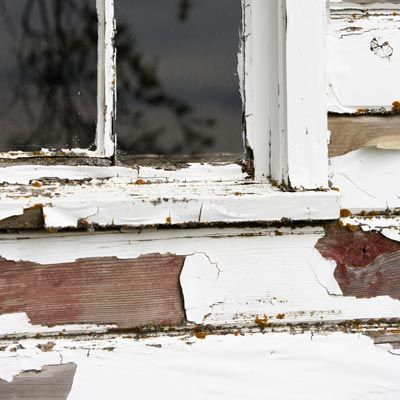
Lead exposure in the home remains a significant health concern, particularly in older houses. While lead’s effects on cognitive development in children are well-known, it can also impair fertility in adults. Lead may be present in old paint in homes built before 1978, old plumbing fixtures, and in the solder used in older plumbing systems.
Have your home tested for lead if it was built before 1978. If lead is present, consult with a certified lead abatement professional to develop a safe removal plan. For plumbing, replace old fixtures and pipes with modern, lead-free alternatives. Additionally, install a water filter certified to remove lead for added protection.
Asbestos
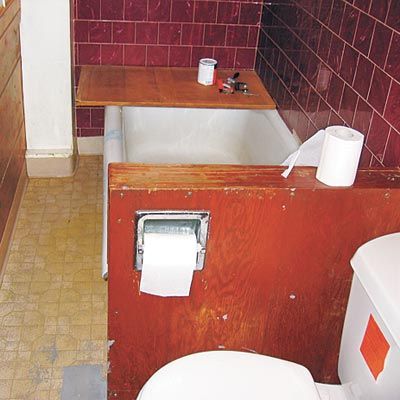
Asbestos can quickly pose serious health risks if you inhale its fibers. Although banned from building materials in 1972, asbestos may be present in older homes, particularly in vinyl floor tiles, insulation, and plaster.
If you suspect asbestos in your bathroom, don’t disturb the material, as this can release harmful fibers into the air. Instead, have your home professionally tested using an asbestos test kit or by hiring a certified asbestos inspector. If asbestos is present, consult with a licensed asbestos removal professional to determine the best course of action. In some cases, encapsulation (sealing the asbestos-containing material) may be a better option than removal, depending on the condition and location of the material.
Keeping Your Bathroom Clean and Healthy
Following a consistent maintenance and cleaning routine helps foster a healthy bathroom environment and allows you to spot issues at their onset. Create a schedule that includes daily, weekly, and monthly tasks to address potential health hazards before they become serious problems.
Daily tasks should include wiping down surfaces, hanging towels to dry properly, and running the exhaust fan after showers. Weekly cleaning should involve disinfecting surfaces, including often-overlooked areas, such as shower curtains and bath mats. Monthly maintenance might include inspecting grout and caulk and cleaning exhaust fan covers.
Proper ventilation goes a long way to reducing bathroom contaminants. In addition to using an effective exhaust fan, try opening windows when weather permits for fresh air circulation. Use air-purifying plants, such as spider plants, peace lilies, or bamboo palms, which can help remove toxins from the air. You may also want to install a small air purifier with a HEPA filter to capture airborne particles and allergens.
